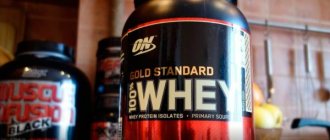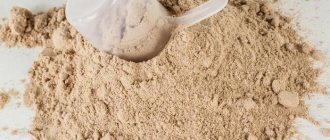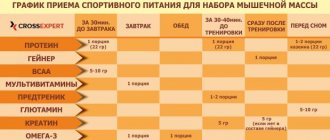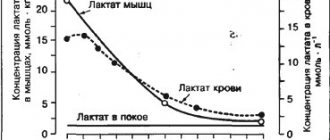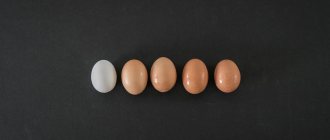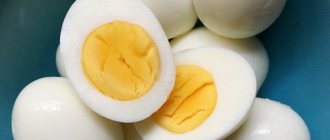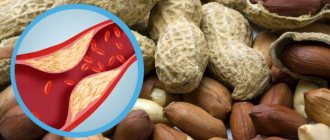Most athletes know that whey protein is very effective for building muscle mass, but what exactly is whey protein hydrolyzed good for?
If the number of syllables in a supplement's name were directly proportional to the number of additional pounds of muscle mass gained, whey protein hydrolyzate would put any sports nutrition product to shame. But let's see, does the addition of “hydrolyzate” actually provide any significant benefits to regular whey protein, or are its outstanding properties nothing more than a figment of the imagination of inexperienced athletes who, with their advice, simply make you waste an extra couple of dollars a month?
In this article, we'll cover what whey protein hydrolyzate actually is, one of the most controversial and widely discussed supplements in the modern fitness community.
What is whey protein hydrolyzate?
Milk is made up of two main types of protein: casein and whey. During early lactation, whey protein in breast milk constitutes approximately 90% of the total protein content, and then the whey to casein ratio levels off to approximately 60:40 and 50:50 in mature and late lactation, respectively. By comparison, cow's milk contains only 20% whey, the remaining 80% being casein.
The high content of whey protein in breast milk indicates its important role in stimulating the rapid development and strengthening of the immune system, and the abundance of casein in cow's milk appears to explain the frequent allergic reactions associated with the consumption of dairy products.
Once cow's milk has been pasteurized and further processed, the whey and casein can be separated in several ways. Sweet whey, which contains only 30-40% protein, is the main form of dietary whey. The remaining 60-70% of sweet whey is predominantly lactose and fat. Filtration and other whey purification processes aim to provide higher protein concentrations and reduce the amount of carbohydrates and fats in whey. The final product is called whey protein concentrate. Whey protein containing more than 90% whey in the total protein is called whey protein isolate.
Regardless of concentrate or isolate content, all of these forms of whey are composed of very complex peptide structures. To reduce their size, enzymes in the digestive system need to sequentially break down the peptide bonds between amino acid compounds to produce small final peptides that the body can absorb. To speed up this process, whey protein manufacturers artificially “pre-digest” the protein, resulting in whey protein hydrolysate.
Hydrolyzate can be produced from sweet whey at any stage of isolate creation. The enzymes and reaction conditions used—as well as the number of peptide bonds available for cleavage—dictate the final composition of the hydrolyzate. The higher the degree of hydrolysis, the lower the number of amino acids in the peptide molecule becomes... and the more bitter the resulting protein tastes. Thus, the properties of whey hydrolysates vary over a much wider range than those of concentrates or isolates.
Isolate (WPI)
Production process
Advanced cleaning mechanism. At the moment, there are two technologies for the production of isolates. Microfiltration and ion filtration method. The first is considered more reliable and safe, the second mechanism provides good cleaning, but the effect of such a protein on the body has been poorly studied.
Compound
Contains more than 85% protein
The mixture is well purified from fats, lactose and cholesterol. Impurities are present in minimal quantities. This mixture is a less risky option for people with allergies than a concentrate.
However, isolate also has disadvantages. During the process of ion filtration, protein molecules are heated and denatured (change their configuration). As a result, many biologically active peptides lose their beneficial properties for the body.
How does hydrolyzate work?
Whey protein is ideal for promoting muscle growth. It has been shown to provide the greatest anabolic response during strength training. In addition, whey protein stimulates muscle protein synthesis 122% and 31% more than casein or soy, respectively.
Whey protein contains 30-50% more of the amino acid leucine, an essential branched chain amino acid responsible for stimulating muscle protein synthesis. It is “bioavailable” and is quickly absorbed, increasing amino acid levels in the blood immediately after consumption. The faster the amino acid content in the blood increases, the higher the peak and total response of protein synthesis.
In addition, whey protein has been shown to improve post-workout recovery and strengthen immune function, as well as increase thermogenesis, promote fat burning and curb hunger. So whey protein is not only great for building muscle mass - it is also a powerful tool in the fight against excess fat! Whey Protein Hydrolyzate further enhances the beneficial effects of whey protein due to its ability to increase plasma amino acid levels more quickly and provide greater concentrations. Although the few human studies do not yet represent a statistically significant sample, the increase in amino acid levels in the blood after consuming hydrolyzed protein compared to regular whey protein looks very promising.
Literature[edit | edit code]
- Foegeding, E. A.; Davis, JP; Doucet, D; McGuffey, M. K. (2002). "Advances in modifying and understanding whey protein functionality". Trends in Food Science & Technology 13(5): 151–9.
- Buckley JD, Thomson RL, Coates AM, Howe PR, DeNichilo MO, Rowney MK — Supplementation with a whey protein hydrolysate enhances recovery of muscle force-generating capacity following eccentric exercise. — J Sci Med Sport. 2010 Jan;13(1):178-81.
- Atsushi Kanda, Masashi Morifuji, Jinichiro Koga, Kentaro Kawanaka, Mitsuru Higuch — Long-term feeding of whey protein hydrolysates increases skeletal muscle glycogen levels and improves exercise performance in mice — J Int Soc Sports Nutr. 2010; 7(Suppl 1): P20. Published online 2010 September
- Boza JJ, Moënnoz D, Vuichoud J, Jarret AR, Gaudard-de-Weck D, Ballèvre O — Protein hydrolysate vs free amino acid-based diets on the nutritional recovery of the starved rat. —Eur J Nutr. 2000 Dec;39(6):237-43.
- Claessens M, Calame W, Siemensma AD, van Baak MA, Saris WH — The effect of different protein hydrolysate/carbohydrate mixtures on postprandial glucagon and insulin responses in healthy subjects. —Eur J Clin Nutr. 2009 Jan;63(1):48-56. Epub 2007 Sep 12.
- Lee YH (November 1992). "Food-processing approaches to altering allergenic potential of milk-based formula." J. Pediatr. 121(5Pt2):S47–50.
- Anssi H Manninen – Protein hydrolysates in sports nutrition – Nutr Metab (Lond). 2009; 6: 38. Published online 2009 September 28
Sounds impressive so far... but are there any downsides?
Paradoxically, although the sharp increase in amino acid levels in the blood when consuming hydrolysate effectively stimulates protein synthesis, it also increases amino acid oxidation - that is, the breakdown of amino acids for use as an energy source.
Some people believe that this increase in oxidation state is equivalent to wasting amino acids, but this is a rather simplistic view of protein metabolism. Just because amino acids are used as a source of energy and do not replenish the body's reserves, does not mean that they are wasted. Whey protein hydrolyzate is still a much more anabolic protein compared to other protein sources that do not cause such a significant increase in amino acid oxidation.
Another potential “downside” is that hydrolyzed whey protein tends to be significantly more expensive than regular whey protein. The higher the degree of hydrolyzate, the higher the price. But as a consumer, you naturally have to weigh the increased cost against the potential benefit.
Efficiency
The efficiency of using hydrolyzate varies significantly depending on the quality of the feedstock. At the same time, it perfectly stimulates sarcoplasmic hypertrophy, which increases the volume of muscle tissue without actually increasing strength.
The most optimal course of using hydrolyzate will be to gain the “dirty mass” in the off-season. The protein is quickly absorbed and stimulates insulin production. The latter can be used to take an additional portion of a quick gainer in order to fill a calorie deficit. At the same time, the amino acid profile of the hydrolyzate is incomplete, therefore, it will not satisfy all the needs of the athlete. Plus, it has a rather unpleasant taste. And you can only stir it with water.
Despite all its revolutionary properties, the overall effectiveness of the hydrolyzate is not much higher than the classic protein, almost equal to isolates from high-quality raw materials, and is even inferior in terms of the absorption rate of BCAA.
Even high-quality hydrolyzate is greatly overrated, although it can be used as an additional source of ultra-fast absorption protein. Its main advantage is the absence of lactose, which, if necessary, allows you to remove the restriction on taking 50 g per dose, which is especially important for athletes on the course.
© Africa Studio - stock.adobe.com
What dosage should you take whey protein hydrolyzate?
This depends on your body weight, your total protein intake, and whether you consume the hydrolyzate alone or along with other protein sources. Because whey protein hydrolyzate is rich in leucine, you don't need to take as much of it as you would if you were trying to maximize muscle growth using other protein sources. For example, a 200-pound athlete looking to increase muscle mass would be advised to take 25-35 grams of whey protein hydrolyzate immediately after exercise or instead of a regular protein supplement. For comparison, to achieve a similar effect without sports supplements, you will need to eat 45 grams of chicken breast.
Application
Protein hydrolysates are used in industries such as:
- Medical (production of medicines, therapeutic nutrition for the prevention of protein deficiency, therapy of pathologies of musculoskeletal and connective tissue, metabolic disorders).
- Food (production of semi-finished meat products, gelatin, wines, edible films and coatings, canned fish, sauces, baked goods, high-calorie supplements for athletes).
- Microbiological (production of diagnostic culture media).
- Production of compound feed.
When Should You Take Whey Protein Hydrolyzate?
This supplement can be taken at any time of the day, but most athletes take whey protein hydrolyzate before and after training.
Consuming whey protein before training ensures that sufficient amino acids are supplied to the bloodstream during exercise. Is it bad for your stomach? Unlikely. Whey protein hydrolyzate is easily digestible and does not interfere with digestion.
Post-workout supplementation promotes recovery by maximizing anabolic response and increasing protein synthesis. Research shows that whey protein hydrolyzate enhances the muscle growth response to strength training, reduces body fat, shortens recovery time, and reduces muscle soreness.
Benefits and risks of protein shakes
The next point I would like to talk about is what are the benefits and harms of sports nutrition such as protein. Let's start with the positive aspects:
- Protein is really a “building material” for muscles. When used correctly and competently, it does not cause any harm to the body.
- Helps suppress appetite as it lowers blood sugar levels and increases the amount of free amino acids. It also stabilizes insulin levels (including in patients with type 2 diabetes).
- Fills the body with a complete set of amino acids.
- Speeds up metabolism, which in some cases promotes weight loss.
- It has a beneficial effect on the general condition: the quality of hair and nails improves, bones and joints are strengthened.
But there are also certain risks
. Experts say that daily consumption of protein is a serious burden on the kidneys and liver. Therefore, those who have problems with these organs need to be careful. Also, after using sports nutrition, eating disorders may begin (especially for those who do not tolerate lactose well). It must be borne in mind that pure protein does not contain any microelements and vitamins: they will need to be replenished in other ways.
How to Choose the Right Supplement
It is recommended to choose supplements that contain whey protein with a degree of hydrolysis of at least 15%. For example, studies (Utah, USA) used a 32% hydrolyzate obtained from an 80% whey protein concentrate; however, at higher degrees of hydrolysis the protein tasted unpleasantly bitter. If you are looking for a product that is low in fat and carbohydrates, choose a hydrolyzate made from whey protein isolate or 80% whey protein concentrate. Increased cleavage of peptide bonds is observed at a high degree of hydrolysis (20-32%).
The most popular sports nutrition containing casein
Casein is a nighttime protein that gradually releases amino acids over 8–9 hours and thus protects the body from catabolism during sleep. It is not as important a nutritional supplement as whey protein, so cost is a key consideration in most cases.
100% Casein wins the “Best Premium Protein” category. The nutraceutical is produced by Optimum Nutrition, consists of micellar casein and keeps you full even after waking up. The powder is supplemented with the prebiotic polydextrose and the enzyme aminogen, which accelerate the processing of nutrients. The dietary supplement contains natural thickeners.
Which protein is the best among products at an affordable price? Ultimate Nutrition ProStar Casein. It contains a mixture of two types of casein:
- hydrolyzed – broken down to the level of amino acids, so it begins to act immediately after taking the drink;
- micellar - in the body it coagulates into a clot, which is slowly absorbed and delivers nutrients to the muscles within 5 - 7 hours.
The supplement is safe for people with lactose intolerance. But it does not form a liquid cocktail, but a thick protein mass.
Now let's talk about budget options. The best proteins in this group are Micellar Casein from MyProtein or OstroVit.
The first has a minimum of flavoring additives and sweeteners, but forms foam when preparing the additive.
The second (contrary to the name) does not contain micellar casein, but milk polypeptides, consisting of 80% slow casein protein and 20% fast whey protein. This composition allows you to begin to nourish muscle tissue within half an hour after drinking the cocktail.
Does hydrolyzate have hidden side effects?
Although some people are allergic to whey protein, allergic reactions with whey protein are not as common as with casein, soy or wheat protein, for example. In fact, it has been proven that even athletes who often suffer from indigestion, abdominal pain, diarrhea, nausea and other gastrointestinal problems resulting from dairy allergies have not experienced any significant side effects from consumption of highly hydrolyzed whey hydrolyzate, consisting predominantly of low molecular weight peptides.
Receipt
There are 3 main methods for producing these compounds:
The following substances are used as enzymes:
Complete protein hydrolyzate contains a complete set of amino acids in an optimal ratio, which is especially important for dietary, medical and veterinary purposes. Such a composition can be obtained by deep processing of raw materials, by boiling the solution for many hours in the presence of acid catalysts.
